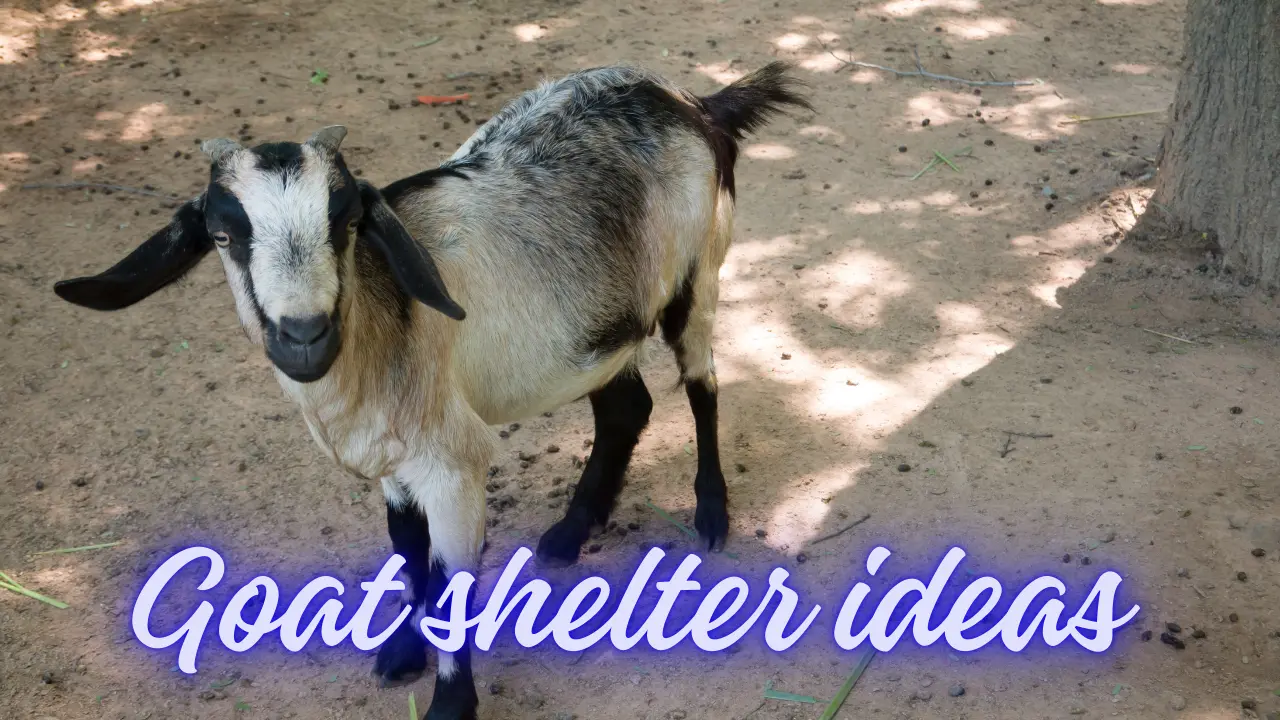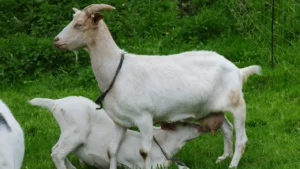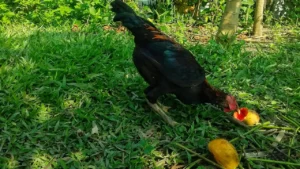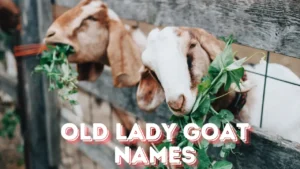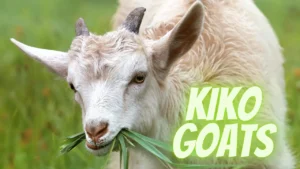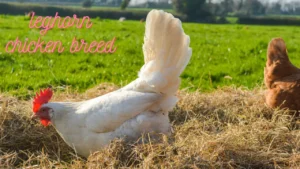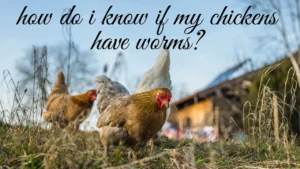When raising goats it’s important to understand that they need proper shelter to stay happy, healthy and safe. The type of shelter can depend on several factors such as geographic location, season and the size of your herd. I’ve found that even though you may have a small farmer setup you don’t have to spend a fortune on a goat shelter. There are cheap cost-effective options out there, like building a goat house using easy-to-find materials such as pallets. In fact, a simple barn or portable enclosure can be just as effective.
The key is ensuring the shelter meets your goats’ essential requirements for protection from predators and the elements, whether it’s a cold winter or out-of-the-rain season. I’ve used these types of shelters on my farm and they’ve worked wonders to keep my goats comfortable. It’s not just about building a place for them to live, but creating a safe and comfortable environment that adapts to the changing season and weather conditions.
Do Goat Shelter Ideas Require Shelter?
When planning a goat shelter it’s important to consider their needs for protection against rain, wind, sun and extreme weather conditions. Goats, unlike some other livestock such as sheep or cattle have a lower tolerance for being wet, so having a proper shelter is crucial. You don’t need to invest in an expensive formal enclosure or barn.
Natural shelters like a modified shed or structure can work well especially if you’re in an arid region with varying seasonal conditions. For example, during winter, you’ll need a shelter that can protect them from the cold while in summer, a shaded area will suffice.
Depending on your budget you could either build a shelter using a kit or repurpose an old shed or even buy a pre-made shed. For a more personalized touch working with a local builder to create a custom barn can provide the perfect solution to meet your goats’ seasonal needs while ensuring easy accessibility to feed and pasture.
Why Do Goats Need A Barn?
A goat barn is essential for providing your goats with a safe and comfortable environment. Whether you’re building a new barn or modifying an existing structure, it can protect your goats from harsh weather and offer a clean and dry environment.
In places like Wisconsin, where old dairy farms and stanchion barns are common, many farmers repurpose these structures to create a cost-effective shelter for goats and sheep. This kind of housing helps reduce stress, prevent injuries and supports the overall health and well-being of your animals ultimately extending their lifespan and contributing to a longer healthier life.
What Materials Can Be Used to Build Goat Shelters?
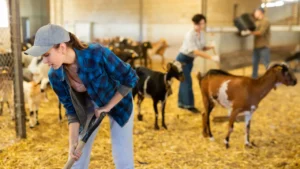
When planning a goat shelter, choosing the right materials is crucial. You don’t need to spend a lot of money to create a safe and comfortable space for your goats. Metal, plywood and even pallets can be used to build a simple, functional structure. Some goats are happy with a two-stories shelter with windows while others might just need a basic structure with a tarp on top to keep them dry.
If you’re looking for more frugal options you can even use repurposed items like calf hutches, dog houses or even old greenhouses. These materials and essential features will help meet your goats’ basic needs and provide them with a comfortable home.
What Materials Can Be Used for a Shelter Floor?
When it comes to creating the best floor for your goat shelter, dirt is often recommended by many goat farmers because it is urine absorbent and cost efficient. For bedding straw or saw dust around 4 inches thick works well for keeping things clean and dry.
In our experience we started with a linoleum floor to make bedding changes easy, but it didn’t last long. It quickly became ineffective, so we switched to a subfloor from our house renovations which has been much better at providing the easier drainage needed for a comfortable goat environment. It’s essential to have the right flooring to ensure proper bedding and drainage for your goats’ health.
Where Is the Best Location for a Goat Barn?
When choosing the best place for your goat barn, it’s important to think about factors like ease of access and keeping the goats away from eating areas and the house to avoid the farm smell. If you plan to use their manure for a garden or orchard, consider placing the barn nearby for easy transport.
Also, think about the noise; if your breed of goat tends to be loud at feeding time you might want to locate the barn farther from the house. Don’t forget about water having the barn near a water source can save you from carrying heavy pails during the cold winter months. Alternatively using long hoses or collecting rainwater could help mitigate this issue making it more convenient for you to keep your goats hydrated.
Which Animals Can Be Housed with Goats?
Goats can live in a shelter alongside various other animals, as long as some key factors are considered.
Cows: While goats can share a shelter with cows, it’s important to provide a separate and safe space for the goats due to the cows’ much larger size. A larger barn can work well for both but space must be managed carefully.
Donkeys: Donkeys can be great companions for goats, often helping protect them from predators. However, since donkeys can be territorial their interactions with goats should be monitored to ensure everything runs smoothly.
Chickens: Chickens can cohabit with goats and are often helpful in eating insects and pests around the shelter. However, it’s important to maintain cleanliness to prevent any issues from arising.
Sheep: Sheep are often housed with goats because they share similar feeding habits and are of a comparable size. They can usually coexist peacefully making them great companions for goats in a shared shelter.
Horses: Horses can share a shelter with goats but the size difference means you’ll need careful management to ensure the safety and well-being of both animals involved.
We thought about housing our chickens with our goats but after some research we learned that goats can accidentally harm chickens and even eat their food to the point where it could be fatal. So, we decided against it.
What We Learned from Building a Goat Shelter
When building our goat shelter, we kept things affordable, spending less than $300 by using leftover materials from our house renovations, including 2×4’s and subfloors. These materials worked well and the shelter has lasted for over three years, even surviving a harsh winter. The walls and structure provided the protection we needed from predators and harsh weather conditions keeping our goats safe. We also learned that the shelter should offer enough space fitting up to 32 square feet per goat and in our case, Nigerian dwarfs, which are small, did well with these dimensions.
We also tried using vinyl stick-on tile for the floor but it didn’t hold up due to cracks and urine damage. It was important to have easy access for the goats, so we added a Dutch door for ventilation ensuring they had fresh air while also preventing wind from moving the door. The key considerations when building a goat shelter include essential features like proper ventilation, safety from predators and convenience for both you and the animals.
How to Build a Goat Shelter Using Pallets
One affordable way to create a goat shelter is by using pallets. Pallets are often free or low cost, making them an ideal material for a sturdy and functional shelter. The process involves arranging the pallets to form the walls of a 3 sided shelter, then securing them together.
You can use additional materials like a roof made of a tarp or metal roofing for weather protection. This type of shelter provides ample space for your goats keeping them safe and comfortable with an open design that promotes ventilation and airflow, especially in hot weather.
For winter months, you can make modifications to ensure the shelter offers warmth and protection from snow and rain. Adding insulation such as straw bales or foam board can help retain heat and prevent gaps or drafts. The open sides allow for good airflow while providing enough shade to protect the goats from direct sunlight and the prevailing winds.
10×12 Winter Goat Shelter Designs
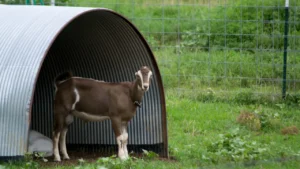
A 10×12 goat shelter is a spacious option, perfect for housing a small herd. It can be designed to keep your goats warm during the winter. Adding insulation to the walls with straw bales or foam board helps the shelter retain heat ensuring the goats are protected from the cold elements. A solid roof and windbreak on the sides can further improve comfort. These easy-to-follow plans make building this practical shelter a straightforward task for any goat owner.
Affordable 8×10 Goat Shelter Design
Our plans for the 8×10 goat shelter were inspired by the need for a well-ventilated space. The shelter is designed to allow continuous airflow, ensuring fresh air constantly circulates through the area. This design promotes a healthy environment by reducing humidity and preventing the buildup of harmful gases making the shelter a comfortable place for your goats.
Affordable Large Goat Shelter
An affordable large goat shelter with a dedicated storage section provides plenty of space for both your goats and their feed and supplies. The storage area keeps everything accessible while keeping the living area organized and free from clutter.
If you need to store hay and straw, it’s best to keep them nearby instead of in a distant shed especially in snow where it can be harder to transport the materials. A 10×14 shelter is perfect for keeping your goats protected from the elements while storing the essentials.
A-Frame Shelter for Goats
A 3-page guide for building an A-Frame Shelter offers a comprehensive list of materials and step-by-step instructions to help you create a cost-effective solution. This design focuses on using affordable materials to build a sturdy, functional shelter quickly. The straightforward design makes it an ideal choice for anyone looking to create a frugal yet reliable shelter for their goat.
Movable Goat Shelters
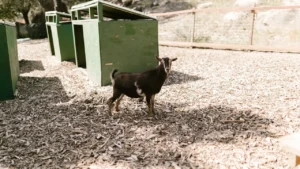
Movable goat shelters are a great option for farmers who need flexibility in how they manage their herd. These shelters are designed to be easily relocated, providing a solution that works across different seasons and geographic locations. A mobile shelter can be moved around to different areas of the pasture offering your goats access to fresh feed and space while also ensuring they are protected from predators and extreme weather conditions like snow or heat.
In addition to offering protection, movable shelters can improve the ventilation and airflow, ensuring fresh air circulates while also keeping the goats dry. Whether you’re dealing with the cold of winter or the humidity in summer, a portable enclosure helps adapt to various weather conditions. With movable pen walls you can even adjust the shelter’s size as needed and keep it in good condition for your kids while offering protection from the elements.
FAQs
1. Do goats need shelter?
Yes, goats need shelter to protect them from rain, wind, sun and extreme weather. A safe, dry space ensures their well-being and comfort.
2. What is the best type of shelter for goats?
The best shelter for goats varies based on season and location. It could be a barn, shed or mobile shelter depending on the goat’s needs.
3. How big should a goat shelter be?
A goat needs about 15-20 square feet of space in a bedded pen. Goats with kids may need 25+ square feet for proper comfort.
4. Can goats share shelter with other animals?
Yes, goats can share a shelter with animals like sheep and chickens but their interactions should be monitored to prevent issues due to size differences or territorial behavior.
5. What materials can be used to build a goat shelter?
You can build a goat shelter using wood, metal, pallets or tarp for the roof. Using affordable, durable materials ensures a safe and functional shelter.
Conclusion
When it comes to building the perfect goat shelter, it’s important to consider factors such as space, ventilation and weather protection. Whether you’re looking for a cost-effective solution like a portable shelter or a more permanent structure like a barn understanding the needs of your goats is key. A well-designed shelter ensures your goats are protected from extreme weather conditions have access to fresh air and remain comfortable year-round. By using the right materials and planning for seasonal changes you can create a space that will not only keep your goats safe but also improve their health and productivity.
Building a goat shelter can be a rewarding experience especially when you consider the flexibility of options available such as mobile shelters, 3-sided enclosures or even DIY projects using recycled materials. Tailoring the shelter to your specific needs and taking into account your geographic location herd size and management practices will help you choose the best option. With the right planning and thoughtful design your goats will thrive in a shelter that meets all their needs and more ensuring they stay safe, healthy and happy for years to come.
